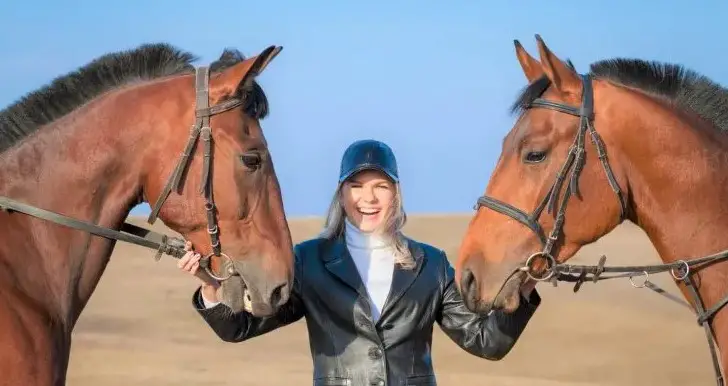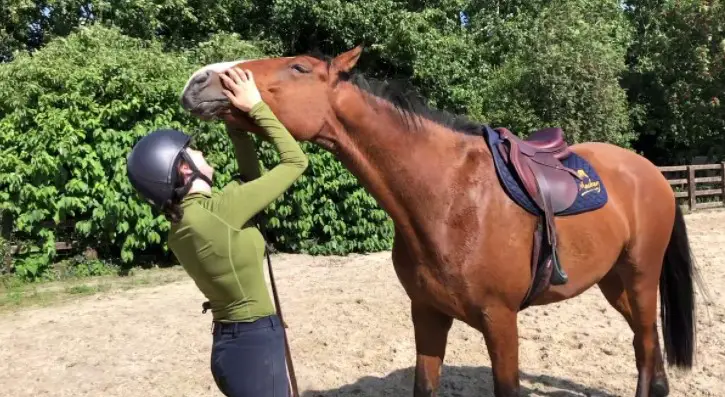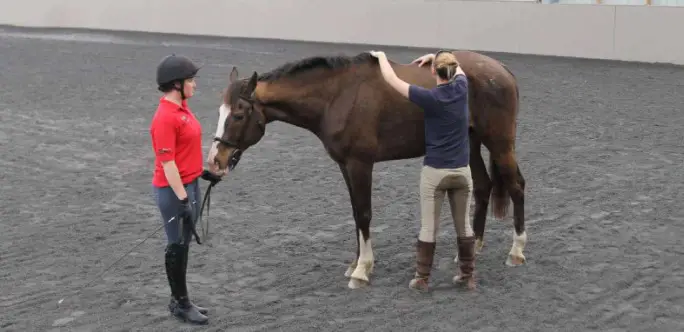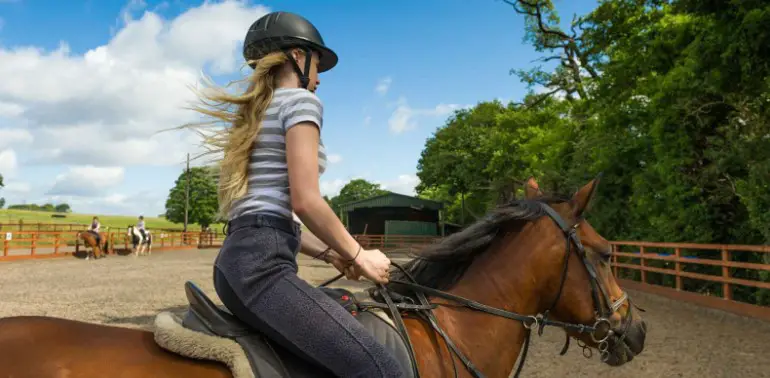Being a horse lover, you try to do everything your tall, muscular, and pampered buddy loves. You like doing things with it and treating it the way it deserves. But maybe you are afraid to take him on a race or a long ride. You are considering that he might be unhappy or feel discomfort during the ride.
If you are one of these horse lovers or owners, then you have come to the right place. We are going to clear all your concerns.
What is Your Horse’s Attitude Toward Being Ridden?
When going for a stroll, many careful horse riders are concerned about forcing it on their horse. Is it enjoyable for them? Is it a problem for them to carry the gear and bear a rider on their backs?

The issue with these topics is that they require a yes or no response. It’s a little more complex than what you think. It depends on both the animal and the person. Some horses are uncomfortable with being ridden and are unlikely to improve. They are similar to humans in this regard. But most horses do enjoy it.
Just ask yourself, would you like to stay in bed on a gloomy morning or go on a walk with your loved ones? You will probably go with the second option. Much like you, horses enjoy going out, being in nature, and enjoying a good walk or run as opposed to simply staying indoors 24/7. All that matters to them is who is riding and the circumstances of the ride.
Reasons Why A Horse May Dislike Being Ridden
Many horses love being ridden. For one thing, it keeps them from becoming bored. The horse and rider interact closely to make the ride enjoyable. This is a crucial phrase since many horses that dislike being ridden have valid reasons. These reasons can be:

Improper Tack
The tack you chose must fit the animal and yourself correctly. Saddles are not one-size-fits-all, and the best option is to customize them according to your horse’s needs and the type of riding you are going to do. This can be pricey, and there are other options.

Bring your animal’s measures to the saddlery. This, together with your horse’s gender and breed, helps you find the best fit. Discuss the sort of seat you want and the riding exercise you wish to conduct while you’re at it. This will help you pick the correct gear and other necessary equipment.
Remember the horse’s health and how you have to engage with it when choosing bits and saddles. Is this supposed to be a ranch horse? Do you intend to do any easy hikes on the surrounding paths? Will you be participating in a contest? These are some of the things to consider when choosing your tack.
Some of these may demand unique tack, while others may have variations you should clarify with the saddlery staff.
The Rider
The rider is the main reason for a horse to approve or deny a ride. Horse riding is an excellent exercise for humans, so you should make sure that you do it right. Never let any unknown or new person ride your horse right away. If you have just bought a horse, stay with him for a little while, make him believe that you are his friend, and then proceed to ride him.
Just imagine if a stranger came and sat in your car and ordered you to move. Would you feel comfortable? Horses are no different to humans; they want to know the rider before carrying them. Become his best friend before riding him and establish trust.
Preparation
Make sure that the horse is ready to exercise. The first step is to give the horse thorough grooming. You’ll be able to check whether any wounds might make the ride difficult; make sure there are no tangled sections of hair to pinch.

Give heed to your horse’s behavior when brushing the spot where the saddle rests. If it winces, it might be a stress response that needs to be addressed.
Before putting the saddle pad on the horse, gently brush it. You should look for lumps, rashes, and redness on the horse’s back to see if it’s fit to ride. Check the saddle cover for dirt when strapping it on. It’s pretty common for minor chips or straws to stick themselves to the underbelly.
Ensure the saddle cover isn’t knotted up in one location or lying awkwardly after you’ve put it on the horse. An incorrectly fit saddle pad can create various issues, including pinching the horse. Saddle pads must be in good shape and fixed in place.
Check the girth on your saddle before adjusting it to ensure it’s clean and resting properly against the horse, not squeezing it.
Post-Ride Care
Just like you need a warm-up before gym and cool-down after a workout, the body of horses responds just like humans. After you complete the ride, make sure you take care of your horse. It’s not simply about getting rid of the tack.
If you’ve been riding aggressively, you might want to wait until the horse has calmed down before getting in the water. You should untack your horse and gently walk it for a few moments before giving it a drink of water. Then, walk it for a few more minutes before giving it more water. Repeat the process until you are sure that the horse has cooled off properly.
Then, it’s necessary to clean and comb your horse again for the same purposes as before the ride. Sweat might gather and dry while riding, and dried sweat causes itching. Grooming the animal will make it feel better, and you may check for wounds once more.
When brushing your horse, always keep in mind the horse’s hooves, particularly after a harsh ride. Dirt and gravel might irritate the foot, causing discomfort. You may also check for leg injuries and determine whether it’s time to contact the farrier or vet.
How Can You Tell Whether Your Horse is Happy?
Happiness is not always obvious; it reflects from the behavior and face of a person. Likewise, telling if a horse is happy or not isn’t any complex job for somebody who knows about horses. But, for those who don’t know, here are the ways by which you can find out:
- Ears that are upright, flexible, and relaxed
- Walking solidly on all four feet with a bowed head
- Lips that are saggy and relaxed
- Eating and lapping
- Slow blinks and a kind glance
Why Do Horses Allow Humans To Ride Them?
To know why horses allow us all to ride them, you must first recognize how a horse’s mind operates. Like most prey animals, horses have three basic demands in life: to feed, breed, and stay safe.
Those three components are their top priorities and will take place over anything else, and they’re glad for us to ride them because we take better care of their food and shelter.
The relationship between a horse and its rider is the key, and horses undoubtedly see their owners as group members, although a relatively odd-looking and odd-behaving one. Consequently, they believe that what we’re asking them to do won’t damage or hurt them in any way. They typically cooperate without any opposition.
Importance of Age of Your Horse for Riding
You won’t send a kid to a job or ask a senior citizen to complete a marathon, so you should not ride horses that are too young or too old. But what determines too early or too late?
Irrespective of age, a horse must not be ridden until its legs have fully matured and its knees have grown. If a horse’s knees are still growing, they are in great danger of permanent harm. Riding a horse whose knees haven’t developed completely might cause long-term discomfort.
When do the knees of a horse stop closing? Different breeds of horses grow at different paces, much like humans. Thus it’s hard to establish a specific age for all of this.
Racehorses grow faster than other breeds and can start training at the age of one or two. Draft horses and certain warmbloods are ready to be ridden under saddles about the age of four.
Conclusion
Horses can love being ridden, provided you treat them with respect and love. Horses are clever creatures, so they may enjoy riding, particularly if they’re trying something new and not repeating the same acts repeatedly. On the other hand, the horse is more concerned with your happiness and their safety.
